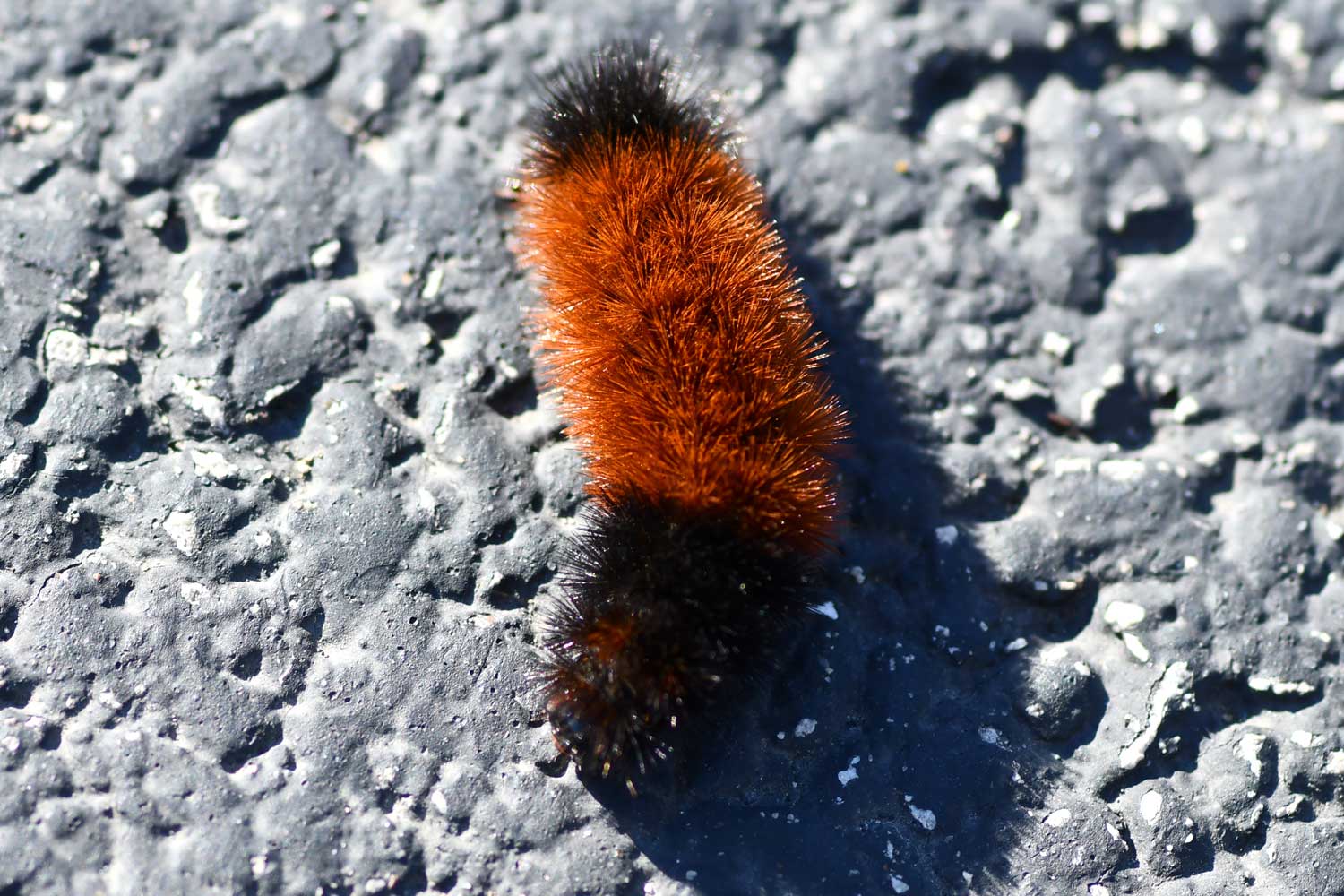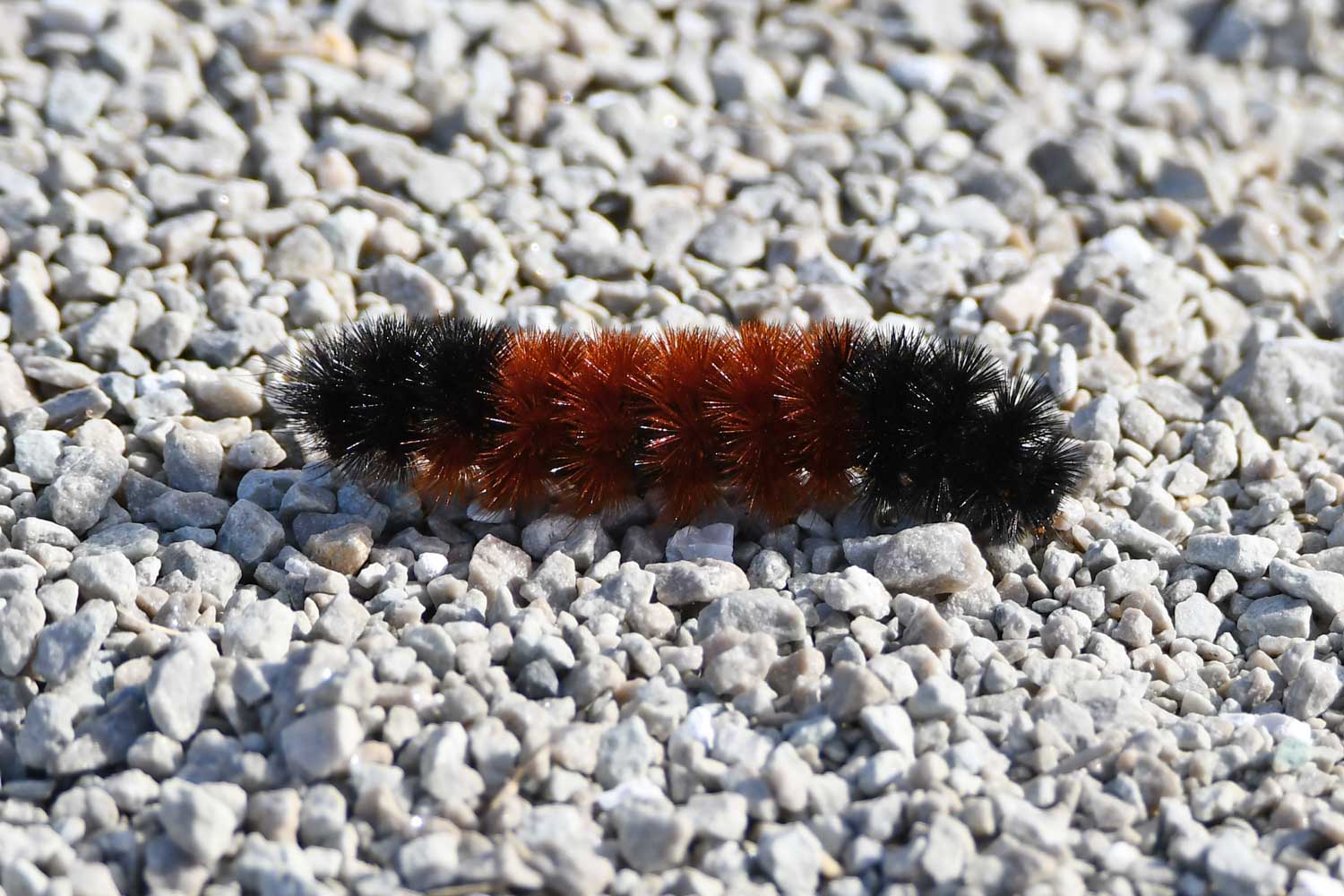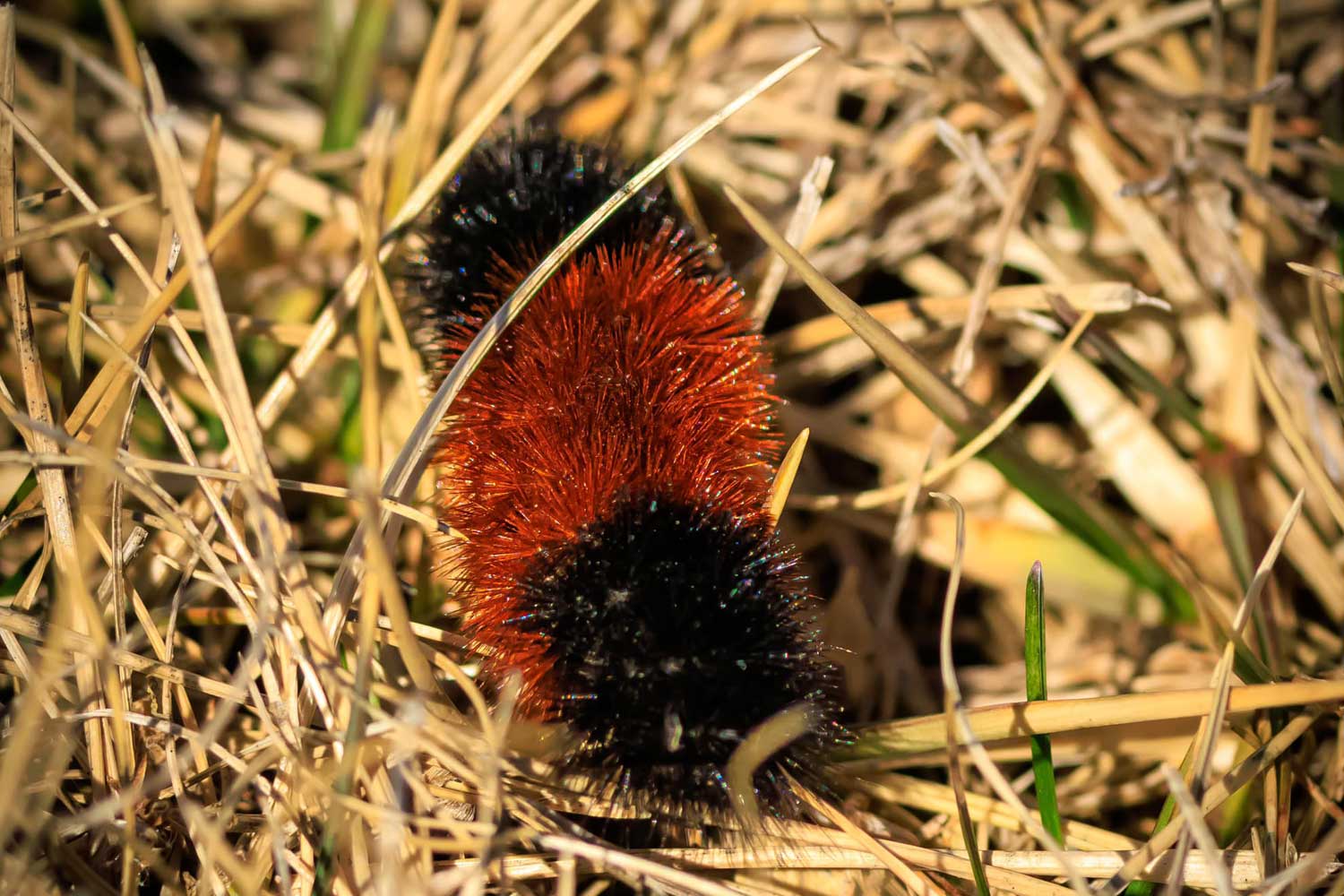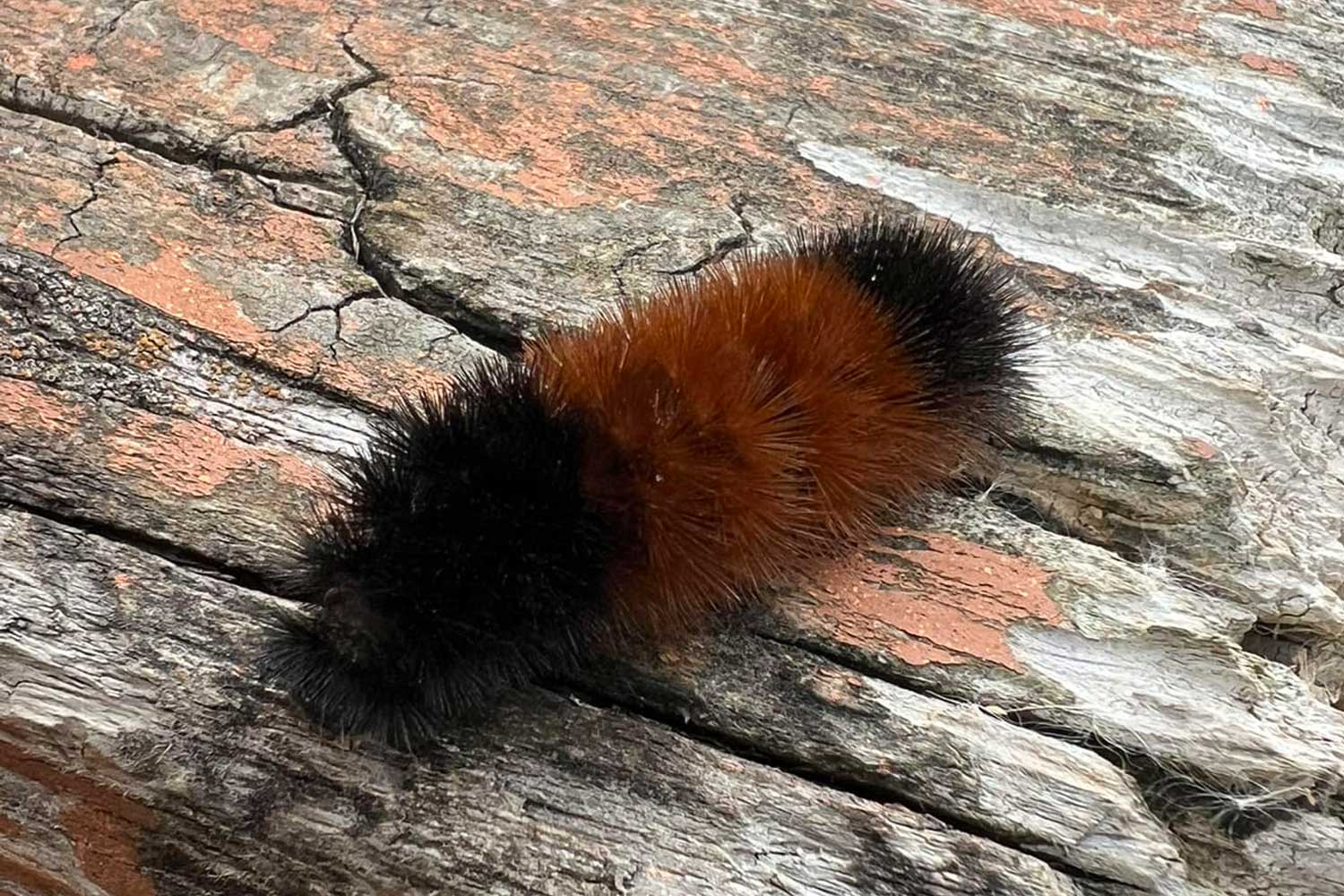Nature curiosity: Why don't woolly bear caterpillars freeze to death?
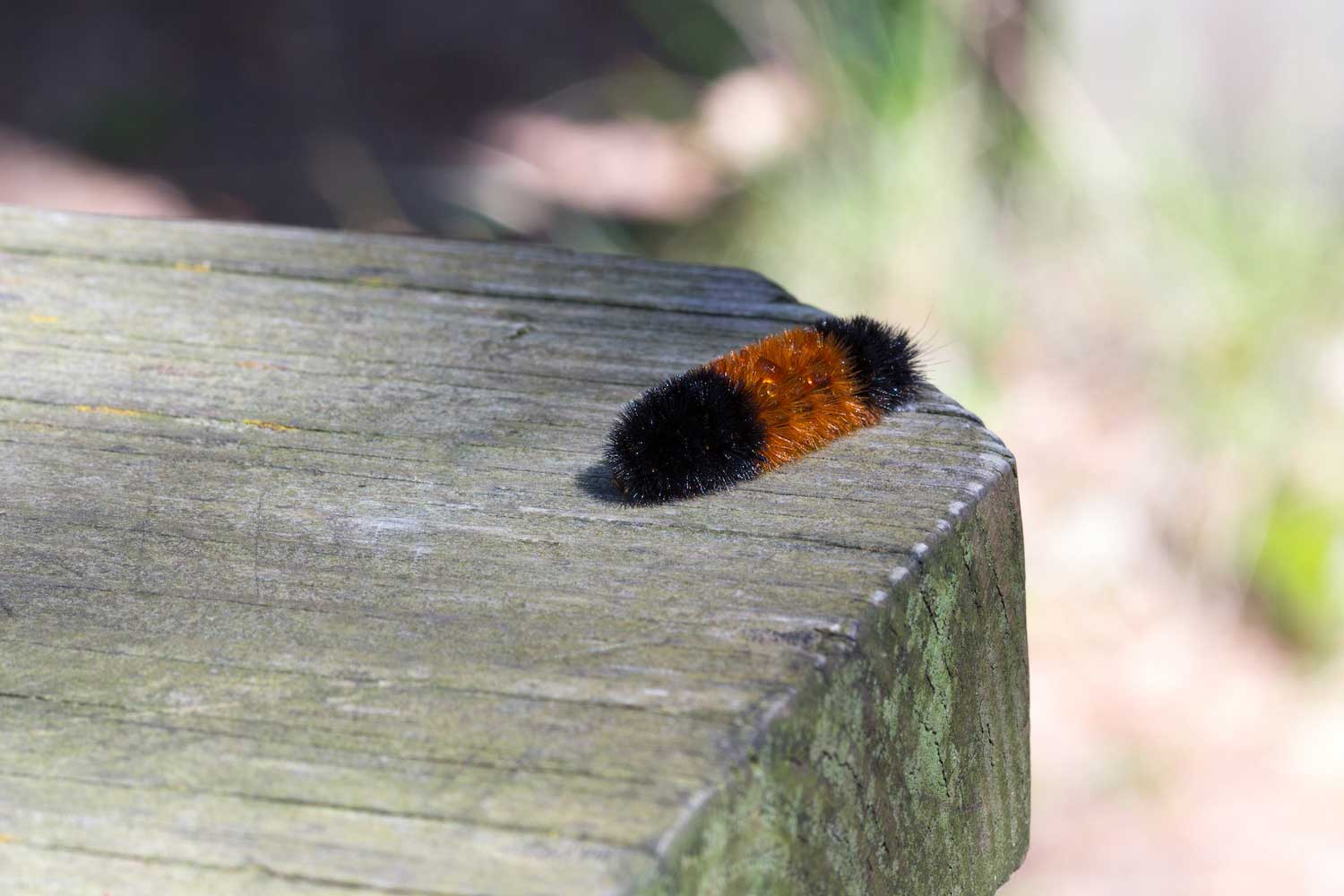
Woolly bear caterpillars are one of the most recognizable caterpillars we see, easily identifiable by the black bands at either end of their bodies separated by a rusty brown band in the middle.
Those colored bands are behind the legend that woolly bear caterpillars can tell us how bad of a winter we are in for. As the story goes, the longer the black bands at either end of the caterpillar are, the snowier and colder the winter will be, according to the National Weather Service. But that's not all. A big black band on the head end of the caterpillar is said to mean early winter will be particularly harsh. A big black band on the back end means the end of winter will be cold and snowy.
As you no doubt know, this sort of weather forecasting is about as accurate as relying on a groundhog to tell us when winter will end. In reality, the length of the bands has to do with the caterpillar's age and how long it has been feeding. It has nothing to do with the upcoming winter.
Woolly bear caterpillars overwinter as caterpillars before building cocoons in the spring and emerging a few weeks later as Isabella tiger moths, according to The Caterpillar Lab. In the fall, we often see these caterpillars moving about, sometimes even crossing roads, while searching for food or looking for a place to spend winter. They typically overwinter in protected spots like under a wood pile or in leaf litter.
But how do they survive the long, harsh winter? Much like your car does, it turns out. These caterpillars produce a substance called glycerol, which works in their bodies like an organic antifreeze, according to the University of Missouri Extension. As the weather turns colder, the caterpillars slowly freeze, but the glycerol prevents their inner cells from freezing. This allows them to survive even the most extreme winter weather conditions.
In fact, woolly bear caterpillars can survive at temperatures as low as 90 degrees F below zero, according to the weather service. They've even survived an entire winter frozen in an ice cube!
Here in Will County, they don't need to be quite so hardy, as the mercury doesn't dip that low on even the coldest of days. But this ability to survive extremely cold weather is useful in the Arctic, where the caterpillars also live.
Woolly bear caterpillars don't spend the entire winter in their frozen state unless the weather requires it. If the weather warms above freezing, they "defrost," so to speak. During warmer spells, we may even see them out and about, particularly on sunny days. If temperatures drop, they once again enter their frozen state. They can repeat this freeze-and-thaw cycle many times over the winter.
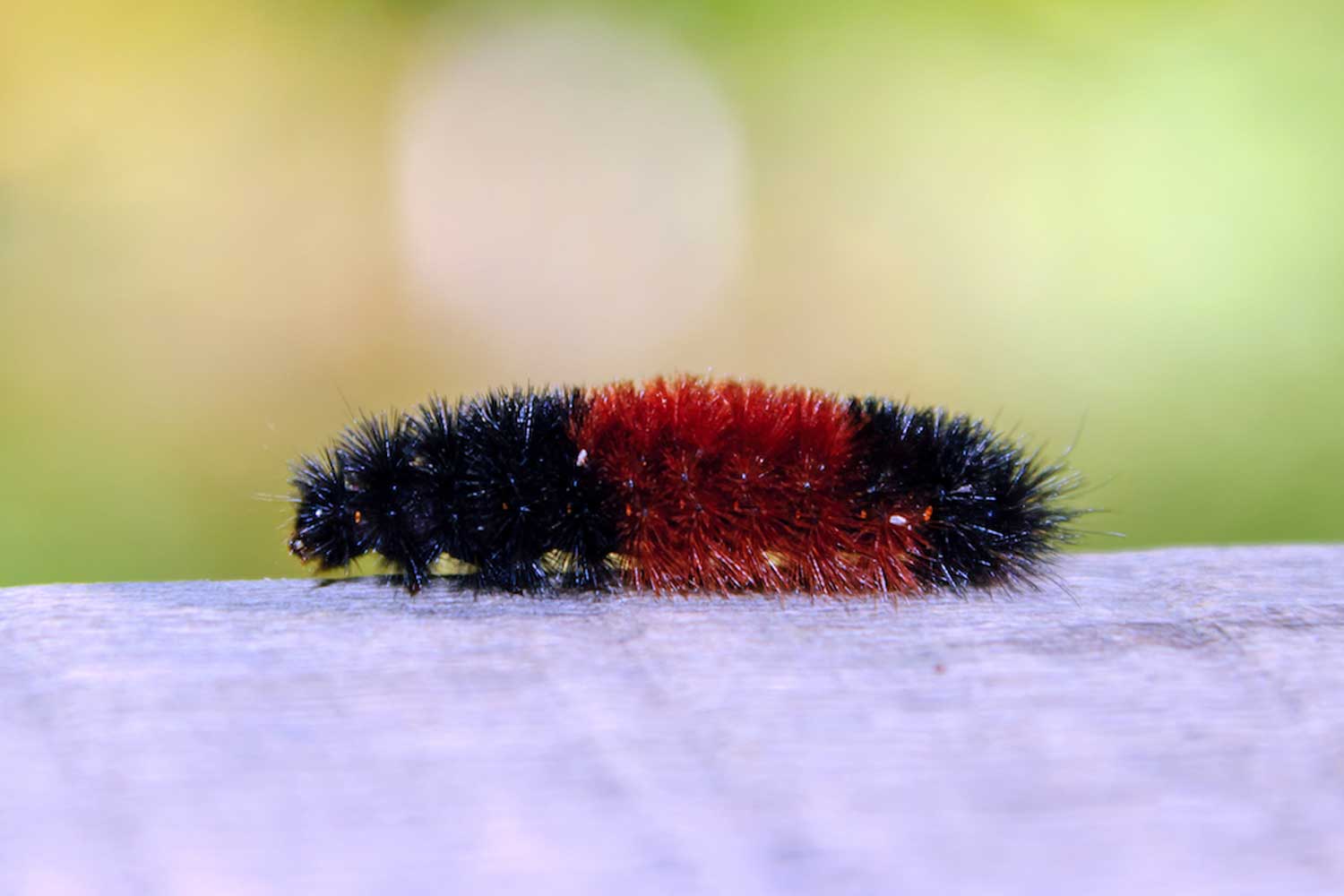
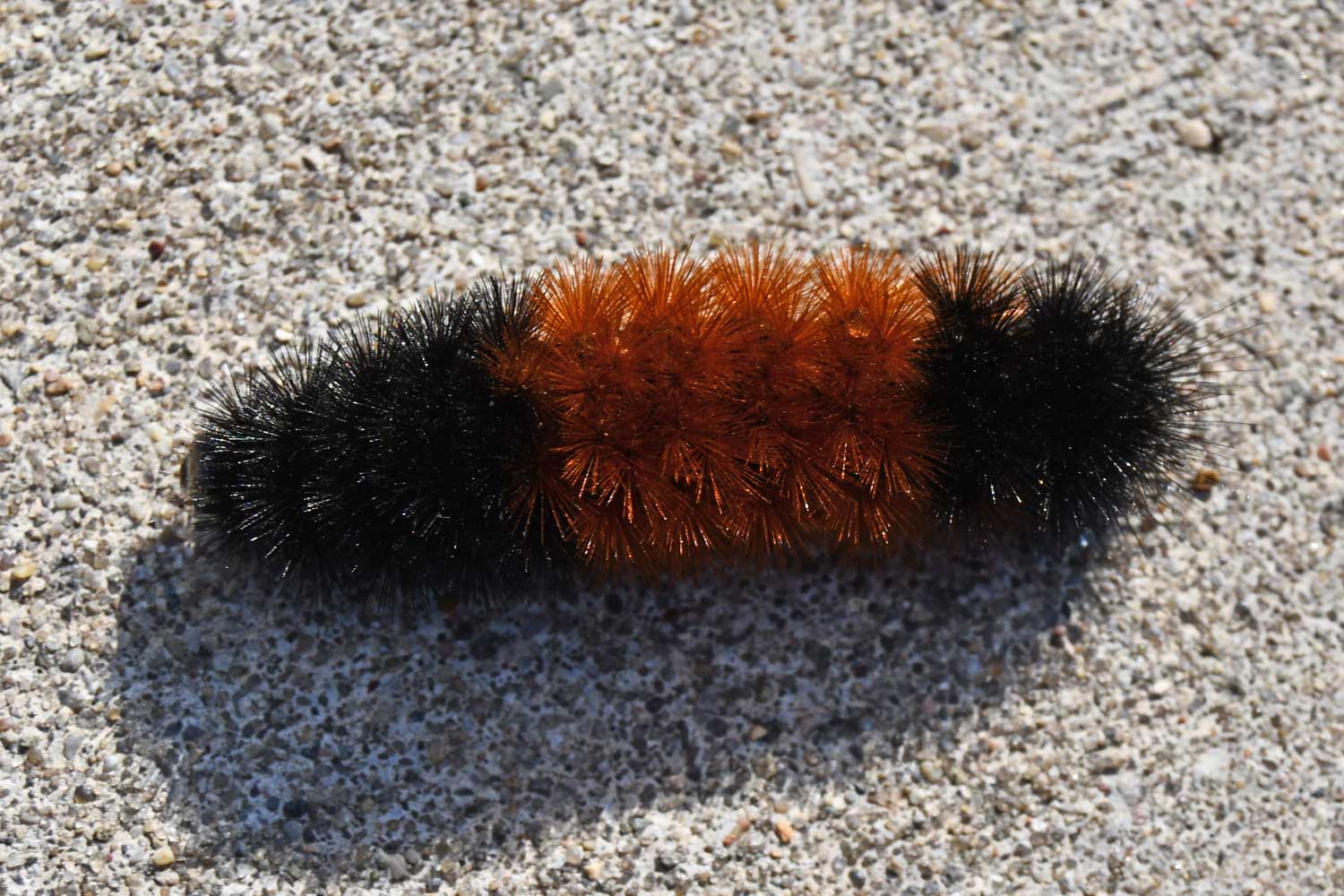.jpg?width=1500&height=1000&ext=.jpg)
